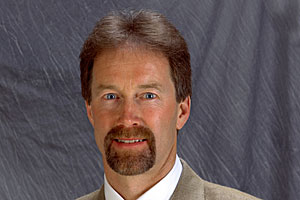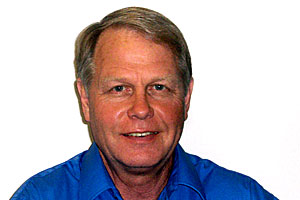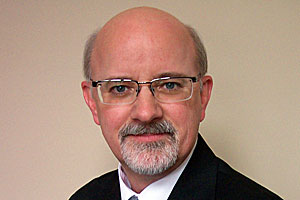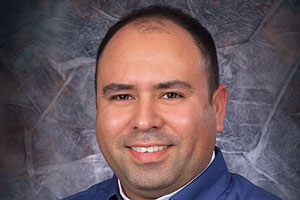Dairy producers in the Central Plains and beyond have the opportunity to come together once again for the 2011 Central Plains Dairy Expo, March 29-31, in Sioux Falls, South Dakota. John Michael Montgomery will be headlining the welcome reception* on Tuesday, March 29, while more than 200 exhibitors will fill the Convention Center the next two days.
Attendees may start off Wednesday, March 30 in an inspiring way by attending the Prayer Breakfast** at 6:45 a.m. With prayers, song and testimonials, the importance of faith in our personal and professional lives will be celebrated.
Mike Wells, president and CEO of Wells Dairy, LeMars, Iowa, and Harvey and Lisa Van Ess, Van Ess Dairy, Sanborn, Iowa will provide testimonials.
Wednesday and Thursday have a full seminar line up highlighting keynote speakers David Okerlund, humorist, and Michael Swanson, Wells Fargo chief economist. 5-Star Sponsor Breakout Sessions will be also be held.
To provide a preview of the breakout sessions, Progressive Dairyman asked the speakers to comment on their presentations. Click a link below to see responses from a specific presenter or topic:
• , presented by Brian Miller, Boehringer-Ingelheim
• , presented by James Ladlie, ProfitPro
• , presented by David C. Weakley, Forage Genetics International
• , presented by Marko Sosa, Vi-Cor
• , presented by Mike Hutjens, University of Illinois Extension
• , presented by Gary Neubauer, Pfizer
• , presented by Byron Housewright, Nutrition Service Company
Hypocalcaemia In Fresh Cows- It’s More Than Just Milk Fever
Presented by:
Brian Miller, DVM
Professional Services Veterinarian
Boehringer-Ingelheim Vetmedica, Inc.
Why is this topic important?

MILLER: Hypocalcemia is linked to several periparturient diseases including ketosis, metritis, mastitis and displaced abomasum. There are also potential negative effects on production and reproductive performance in the subsequent lactation.
While everyone recognizes the down milk fever cow, there is a larger group of animals on a dairy that are not always recognized.
These are cows that suffer from subclinical milk fever, and these animals suffer from the same periparturient diseases that affect health and performance as milk fever cows.
These are cows we simply need to focus more attention to. Both groups of animals have an increased risk of early removal from a dairy herd before 60 days in milk due to premature culling or death due to these associated diseases.
What do you hope attendees will take away from this presentation?
MILLER: It is my hope that in this session, attendees will come away with a greater appreciation of the negative effects of hypocalcemia in fresh cows. We will first discuss calcium metabolism in the fresh cow.
Next, we will focus on periparturient diseases associated with low blood calcium and examine these interrelationships. Finally, they will learn of an innovative oral calcium supplement manufactured by Boehringer-Ingelheim.
Use of this supplement around the time of calving may help reduce losses due to periparturient diseases associated with hypocalcemia.
The Full-Circle Animal, Manure and Soil-Plant System
Presented by:
James Ladlie, Founder, ProfitPro (right)
Lou Ann Hughes, President, Performance Products, Inc.
Why is this topic important?

LADLIE: Using a probiotic approach improves animal performance, manure remediation and crop performance, which, in turn, enhances the feed quality coming back to the animal.
A key benefit of the program is the bioaugmentation of manure into a non-odorous, nutrient rich solution that sheds all of the negative attributes of raw undigested manure.
This system allows a dairy operation to achieve balance and health in many facets. It is important for production, return on investment and reducing stress throughout the operation.
What do you hope attendees will take away from this presentation?
LADLIE: That they can gain the know-how and understanding to economically address dairy cow health, manure quality and feed quality with the full-circle system.
A New Tool to Manage Variation in Ruminal Starch and Fiber Digestion
Presented by:
David C. Weakley, PhD
Director, Dairy Forage Nutrition Research
Calibrate Technologies
Forage Genetics, International
Why is this topic important?

WEAKLEY: As economic challenges evolve in the dairy industry, improvements are required in how cows are fed to maintain profitability.
Most on-farm formulation systems operate by optimizing crude nutrient profiles in the diet. While these approaches provide convenient and precise recommendations to the nutritionist, the results may not always be directly relevant to the dairy cow.
Rather than responding directly to crude nutrient inputs, the cow is reacting to the digestibility of these nutrients in various parts of the digestive tract.
Furthermore, ingredient nutrient content and digestibility change over time. To better adjust to these changes, and provide diet solutions that are more optimized for cow performance, a method is needed for more rapid, accurate monitoring of nutrient supply and digestibility.
What do you hope attendees will take away from this presentation?
WEAKLEY: Diet formulation challenges have become more critical as a greater diversity of ingredients is being considered to reduce ration costs.
Additionally, a trend toward higher forage diets results in a need to better understand and control variation arising from concomitant changes to ruminal fiber and starch digestibility.
This presentation will describe a tool that can be used to monitor these changes, compare them with dietary response targets, and better optimize cow performance.
Udder Dissection Wet Lab and Mastitis Workshop
Presented by:
Marko Sosa
Milk to the Max customer support specialist
Vi-Cor
Why is this topic important?

SOSA: Mastitis is one of the dairy industry’s most expensive diseases in the world.
If we can understand in the most simplest of terms what mastitis is, what somatic cells are and how bacteria are involved in the picture, then we can prevent the disease instead of fighting a losing battle. The anatomy of the udder can easily help us understand this most costly disease.
What do you hope attendees will take away from this presentation?
SOSA: We hope that the attendees can at least take home a simple way to educate their employees about mastitis.
They will also receive a firsthand everlasting impression of where milk comes from and where mastitis really occurs.
Precision Feeding Approaches
Presented by:
Mike Hutjens
Dairy Specialist Emeritus
University of Illinois Extension
Why is this topic important?

HUTJENS: Dairy cows thrive with balanced and consistent rations.
Dairy managers face several challenge points to insure and deliver optimal rations: variation in the field (harvesting patterns such as four to five cuttings annually), variation in feed ingredients (legume grass forages and distillers grains are examples), variation in mixing rations (shrink and uniformity of TMR), variation in the feed bunks (sorting and uniformity), and variation in digestion (rumen pH and absorbed nutrients).
An update on feed strategies with $6.50, $7, $8 or higher corn will be outlined.
What do you hope attendees will take away from this presentation?
HUTJENS: Each challenge point or area will be reviewed with guidelines and recommendations that dairy managers can implement on their dairy farm.
Recommendations on rumen fermentable carbohydrates (starch, sugars and soluble fiber), by-product feeds and feed additives will be summarized. Ample time will be available for questions and comments.
Salmonella A Case Study: Concerns For Calves, Cows, Workers & Potentially Consumers. What You Should Know about Salmonella Plus Strategies for Prevention & Control
Presented by:
Gary Neubauer
Senior Manager, Dairy Veterinary Operations (East)
Pfizer
Why is this topic important?

NEUBAUER: Salmonella infection is very prevalent in U.S. dairies. The most recent NAHMS Dairy studies (2007) indicate that prevalence of Salmonella infection is increasing on dairy farms and in dairy cows, and that Salmonella prevalence is greater in larger herds (particularly in the eastern U.S.).
Since 1996, the percentage of cows infected with Salmonella has more than doubled. In 2007, 61 percent of dairies with more than 500 cows were infected with Salmonella.
In 2007, 50.9 percent of dairies with more than 500 cows had Salmonella in milk or filters.
Salmonella is a genus of gram-negative intestinal bacteria that can cause serious disease in calves and adult cattle, and include strains that can also be spread to people.
Salmonella is important because the bacteria can easily contaminate many common food products and present a high risk to public health. Therefore, every component of the food industry must take precautions to prevent and control Salmonella contamination.
What do you hope attendees will take away from this presentation?
NEUBAUER: Salmonella infections in cattle can be a very costly due to:
• death losses
• reduced milk yield
• abortion
• weight loss
• poor feed efficiency
• treatment costs
• poor reproductive performance
• prolonged lactations
• excessive body condition
• increased metabolic disease
Salmonella infection not only affects the health and productivity of cattle, it can also lead to an increased risk of transmission to humans. Food-borne transmission accounts for 95 percent of non-typhoidal Salmonella infections in the U.S.
I will be presenting a very interesting study done by Dr. Bhushan Jayarao, Extension Veterinarian at Pennsylvania State University. I will also review strategies for prevention and control of Salmonellosis, and encourage producers to talk to their veterinarian about risks of Salmonella infection and how to formulate a plan of action.
Stay Profitable in 2011: Reducing feed cost and utilizing more home-grown feedstuffs
Presented by:
Byron Housewright
Nutrition Director
Nutrition Service Company
Why is this topic important?

HOUSEWRIGHT: It’s a way to look at alternatives in feeds with reducing feed costs without compromising the performance.
What do you hope attendees will take away from this presentation?
HOUSEWRIGHT: We would like both nutritionists and producers to think outside the ration balancing model when it comes to formulation.
For more information about the Central Plains Dairy Expo, click here or call (218) 236-8420. PD
*Register for free Welcome Reception and Concert tickets by March 25 online or call (218) 236-8420.
**Tickets for the buffet prayer breakfast are $15 per person. Individual tickets or tables may be purchased by contacting Kathy at (218) 236-8420 by March 20.

-
Karen Lee
- Midwest Editor
- Email Karen Lee




